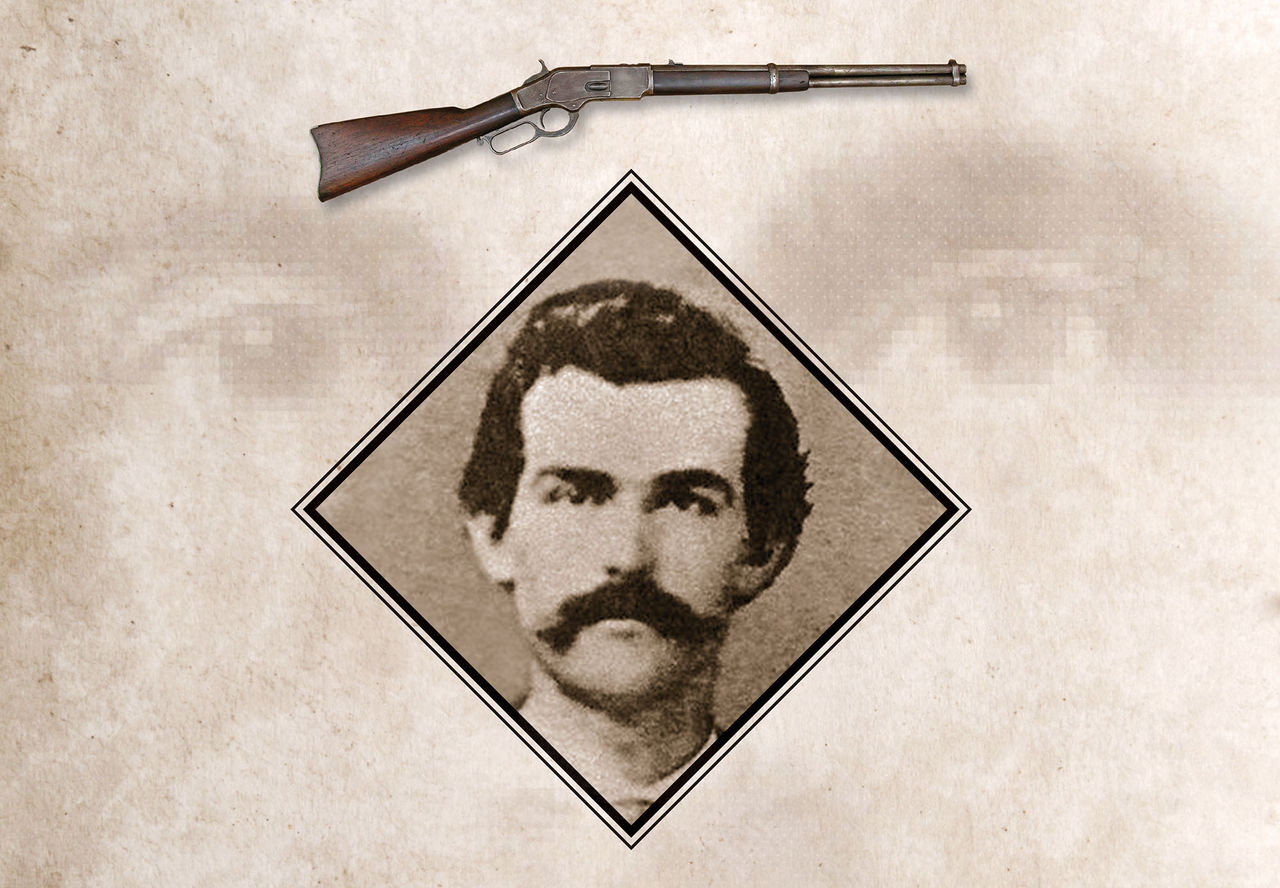Figures in Dentistry: Doc Holliday

Considering the incredible fear surrounding extractions, root canals and dental work in general, being known as “history’s most fearsome dentist” wouldn’t exactly bode well for one’s private practice. You get the feeling that his reviews on Yelp would have been less than stellar, and that word-of-mouth referrals would be few and far between. As a dentist in a time when any dental procedure seemed like something out of a nightmare, Dr. John Henry “Doc” Holliday was a man unafraid of blood, guts and violence. Doc spent his short but historically eventful life roaming the dusty trail in search of danger, fortune and caries.
Born in Georgia to a wealthy family, Doc came into this world on Aug. 14, 1851. After losing both his mother and adopted brother to tuberculosis, Doc went on to attend the Pennsylvania College of Dental Surgery, which his cousin, Robert Holliday, founded. He graduated in 1872 with a thesis titled “Diseases of the Teeth.” The next time you feel like complaining about how difficult state boards were, consider yourself lucky that you didn’t have to write a thesis. Or even read a thesis, for that matter.
Shortly after graduating with a dental degree, Doc began work as a dentist in the office of Dr. Arthur C. Ford in Atlanta, Georgia. It wasn’t long after starting his practice that he came down with tuberculosis, the same disease that claimed his mother and brother. Thinking the drier climate of the Wild, Wild West would be better for his health, he headed to the other side of the country.
Doc moved to Dallas, Texas, and quickly picked up his instruments again as he started work with Dr. John A. Seeger. However, his dental career came to a screeching halt as the coughing spells from his disease began to scare patients away. Even though universal precautions wouldn’t be adopted for another 100 years or so, these patients had the good sense not to let someone with active tuberculosis cough into their open mouth. Doc Holliday was forced to find another way to earn a living.
Naturally, he did what any dentist would do and turned to a career in gambling. An intelligent man, Doc was a successful gambler. Doc was made miserable, however, by the knowledge of his impending death. Moody, a heavy drinker and with no fear of death, he perhaps was more prone to the life he came to lead.
Knowing he had to protect himself, given his dangerous occupation and his disease-weakened body, he began to train with a six-shooter. He quickly gained a reputation as word of this nearly 6-foot-tall, gun-slingin’ dentist spread like wildfire. After his first accounted gunfight on Jan. 2, 1875, when Doc and a local saloonkeeper had a disagreement that quickly turned violent, Doc became increasingly fearless and dangerous. While several shots were fired, neither Doc nor the saloonkeeper was struck and both men were arrested, reported the Dallas Weekly Herald. Initially, the locals thought the gunfight was amusing, until just a few days later when Doc got into another disagreement, this time killing a prominent citizen with two aimed bullets.
Fleeing Dallas, Doc moved to Jacksboro, Texas, where he found a job dealing Faro, a notoriously crooked French card game. He had become an expert shot, and quickly got caught up in some more wild shenanigans. Even though he left one man dead in the dust in a series of gunfights, no legal action was taken against him. However, his luck turned in the summer of 1876, when Doc killed a soldier, bringing the U.S. government into the matter. A reward went out for his capture, and the Army, Texas Rangers, U.S. Marshalls, local lawmen and ordinary residents all pursued him.
To escape his inevitable demise if captured, Doc fled to the Kansas Territory (present-day Colorado), making stops along the way, where he left three more dead bodies in his wake. From there, Doc engaged in numerous shoot-outs and brawls, making friends and enemies along the way. Most notably, he gained the friendship of Wyatt Earp and his brothers, who were by his side fighting in the famous gunfight at the O.K. Corral in Tombstone, Arizona.
On Oct. 26, 1881, outlaw cowboys Billy Clanton, Tom McLaury and his brother Frank McLaury battled it out against the Earp brothers (Wyatt, Virgil and Morgan) and Doc Holliday. Cowboys Ike Clanton and Billy Clairborne ran from the fight, but Billy Clanton and both McLaurys were killed. Doc and Morgan and Virgil Earp were wounded. Only Wyatt Earp strolled out of it unharmed. Despite the name, the gunfight actually went down six doors west of the rear entrance to the O.K. Corral, as well as in the middle of the street. Shots were fired, and bullets flew for about 30 seconds. Ike Clanton filed murder charges against the Earp brothers and Doc, but they were all acquitted.
Doc was a nomadic creature, moving from one town to the next, staying only long enough to win some money at the table and put someone in their place. Dodging any serious jail time, Doc continued his wild rampage engaging in infamous showdowns and run-ins with the law, only to be eventually taken down not by a gun, but by his tuberculosis. When his health began to rapidly deteriorate in 1887, he headed to Glenwood Springs, Colorado, in hopes that the natural hot springs there would improve his condition. Unfortunately, he did not recover, and a few months later, died at the age of 36. As the story goes, Doc always figured he would be killed with his boots on, so when he found himself barefoot on his deathbed, he asked for a glass of whiskey and drank it down. Then, looking at his feet, said, “This is funny,” and died.



